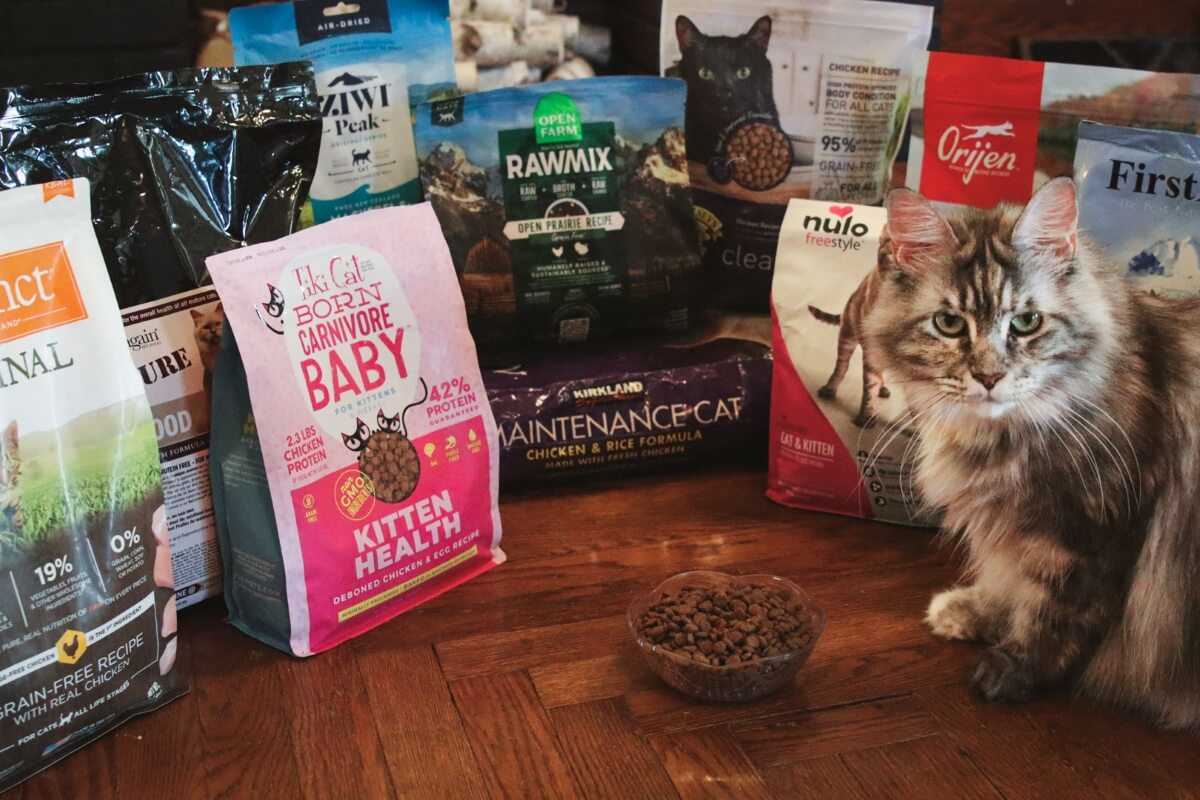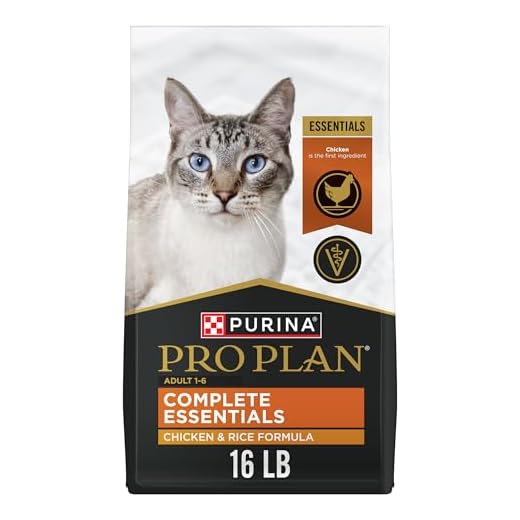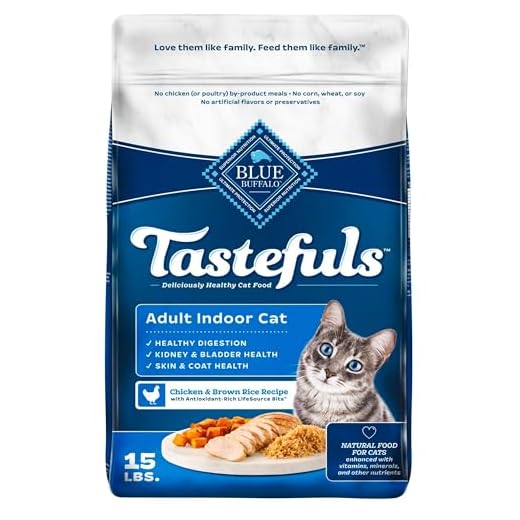




Choosing the right sustenance for your feline companion is paramount, especially for a breed as active and intelligent as the Bengal. I recommend focusing on premium kibbles that offer high protein content and essential nutrients tailored to their unique needs. In this article, I will outline several outstanding options, highlighting their key benefits and ingredients.
This piece will be particularly valuable for Bengal owners seeking to enhance their pet’s diet, ensuring they receive optimal nutrition for their playful and energetic lifestyle. You will find detailed comparisons of various brands, insights into ingredient quality, and tips on transitioning between different types of nourishment.
Expect to learn about top-rated products that provide balanced diets, promote healthy coat conditions, and support overall well-being. By the end, you will be equipped with the knowledge needed to make informed decisions that cater to your Bengal’s specific dietary requirements.
Best Nutrition Options for Bengal Breeds
Choosing the right kibble for Bengal breeds is essential for their health and well-being. High-protein options are recommended, as these felines require a diet that supports their active lifestyle and muscle maintenance.
Look for formulations that prioritize real meat as the primary ingredient. This ensures a rich amino acid profile, which is crucial for their energy levels and overall vitality. Ingredients such as chicken, turkey, or fish should dominate the ingredient list.
Nutritional Insights
Additionally, consider the inclusion of omega fatty acids, which contribute to a shiny coat and healthy skin. Antioxidants and vitamins can support their immune system, while fiber aids in digestion.
- Protein Content: Aim for a minimum of 30% protein to support muscle health.
- Fat Sources: Healthy fats should be available for energy. Look for chicken fat or fish oil.
- Carbohydrates: Limited grains or carbohydrates are advisable, favoring options like sweet potatoes or peas.
Be cautious of fillers and artificial additives that can lead to health issues over time. Always read labels carefully to ensure the absence of low-quality ingredients.
Consulting with a veterinarian can provide tailored recommendations based on specific health needs or dietary restrictions, ensuring optimal nutrition for these active and engaging companions.
Understanding Nutritional Needs of Bengal Cats
Providing an appropriate diet is fundamental for maintaining the health and well-being of these unique felines. Bengal breeds have specific requirements that stem from their active nature and distinct genetic background. A balance of proteins, fats, and carbohydrates is essential for their overall vitality.
High-quality protein sources should be prioritized in the daily intake. These animals thrive on diets rich in animal protein, as it supports muscle development and energy levels. It’s advisable to choose options that list real meat as the primary ingredient, ensuring they get the necessary amino acids.
Nutritional Components
In addition to protein, healthy fats play a significant role in the diet of these cats. They provide essential fatty acids, which promote a shiny coat and healthy skin. Aim for a minimum of 20-30% fat content in their meals to maintain their energy levels.
Carbohydrates can be included in moderate amounts, but focus on high-quality sources. Avoid fillers that offer little nutritional value. Look for whole grains or vegetables that can provide fiber, aiding in digestion.
- Water: Always ensure access to fresh water, as hydration is critical for their health.
- Vitamins and Minerals: Essential nutrients should be included to support overall health and prevent deficiencies.
- Caloric Intake: Monitor their weight to adjust portions as Bengal breeds can be prone to obesity.
Regular consultations with a veterinarian can help tailor a dietary plan specific to the individual needs of each Bengal. This will ensure their nutritional intake aligns with their lifestyle and health status.
Ingredients to Look for in Cat Dry Food
High-quality protein sources are fundamental in a feline diet. Look for named meat or fish as the primary ingredient, such as chicken, turkey, or salmon. These proteins provide the necessary amino acids that support muscle growth and overall health.
Healthy fats, like those from fish oil or chicken fat, are also important. They contribute to a shiny coat, healthy skin, and proper brain function. Omega-3 and Omega-6 fatty acids should be part of the ingredient list.
Additional Beneficial Components
- Carbohydrates: Whole grains like brown rice or oats can provide energy, but should be balanced and not make up the majority of the formula.
- Vitamins and Minerals: Essential nutrients such as taurine, which is vital for heart health, along with vitamins A, D, and E, support various bodily functions.
- Probiotics: These beneficial bacteria promote digestive health and can help maintain a balanced gut flora.
When selecting a blend, avoid artificial additives and fillers. Ingredients like corn, soy, and wheat can be hard for some felines to digest and may lead to allergies.
Always assess the ingredient list closely. A high protein content combined with healthy fats and minimal fillers will contribute to the well-being of your pet over time.
Comparative Analysis of Popular Dry Food Brands
When selecting kibble for feline companions, particularly those with the energetic and playful nature of certain breeds, it’s essential to consider the nutritional profiles of various offerings. Some brands focus on high protein content, while others incorporate unique ingredients for enhanced palatability and digestibility.
Ingredients play a pivotal role in assessing quality. Brands that prioritize real meat as the primary ingredient often provide better amino acid profiles, crucial for muscle maintenance and overall health. It’s advisable to avoid products with fillers such as corn or soy, which can lead to nutritional deficiencies.
Nutritional Components
- Protein Sources: Look for high-quality animal protein sources, such as chicken or fish, which are essential for feline development.
- Fat Content: Healthy fats like omega-3 and omega-6 fatty acids support skin and coat health, contributing to a shiny appearance.
- Fiber Levels: Balanced fiber helps with digestion and can prevent hairball formation, a common concern.
Price vs. Quality
Price can often be an indicator of quality, but not always. Some mid-range options provide excellent nutrition without breaking the bank. Conducting a thorough comparison of ingredients and nutritional analysis is crucial.
Brand Reputation
Consumer reviews and brand reputation can provide insight into the reliability of a product. Brands with a history of positive feedback and quality control measures tend to be more trustworthy.
| Parameter | Brand A | Brand B |
|---|---|---|
| Protein Content | 35% | 30% |
| Fat Content | 18% | 15% |
| Fiber Content | 4% | 3% |
| Price per kg | $10 | $8 |
In summary, choosing the right kibble involves careful evaluation of ingredients, nutritional value, and brand reliability. Prioritizing high-quality protein and healthy fats will support the well-being of your feline friend.
Benefits of Grain-Free Options
Grain-free selections can significantly enhance the diet of felines, particularly those with active lifestyles. These choices often mirror the natural eating habits of wild ancestors, focusing on high-quality proteins and healthy fats, which are essential for maintaining energy levels and muscle health.
One of the primary advantages of grain-free varieties is the reduction of potential allergens. Many domestic felines experience sensitivities to grains, leading to digestive issues and skin irritations. By eliminating these ingredients, owners may observe improvements in coat condition and overall well-being.
Key Advantages
- Improved Digestion: Without grains, digestion may become more efficient, reducing the likelihood of gastrointestinal discomfort.
- Enhanced Nutrient Absorption: High protein content facilitates better nutrient uptake, supporting overall health.
- Weight Management: Lower carbohydrate levels can assist in maintaining a healthy weight, particularly for more sedentary individuals.
In conclusion, selecting grain-free options can offer significant health benefits, aligning more closely with feline dietary needs. Monitoring the reactions and adjustments in health after switching to these choices can provide insights into the most suitable diet.
How to Transition Your Bengal Cat to New Dry Food
To smoothly change your feline’s nutrition, implement a gradual approach over a week or more. Begin by mixing a small amount of the new kibble with the current diet, ideally using a ratio of 25% new to 75% old. This method allows your pet to acclimate to the new taste and texture without causing digestive distress.
Monitor your animal’s response throughout the process. Look for signs of discomfort, such as vomiting or diarrhea. If any issues arise, slow down the transition by extending the duration for each stage. A gradual approach helps ensure a successful switch and maintains your companion’s health.
Steps for Transitioning
- Day 1-3: Mix 25% new kibble with 75% old kibble.
- Day 4-5: Increase the ratio to 50% new and 50% old.
- Day 6-7: Adjust to 75% new kibble and 25% old kibble.
- Day 8: Serve 100% new kibble if no adverse reactions occur.
After successfully transitioning, continue to observe your pet’s health and behavior. Ensure fresh water is available at all times. If any issues persist, consult with a veterinarian for tailored advice.
Monitoring Health and Weight with Dry Food Choices
Regularly tracking the health and weight of your feline companion is crucial to ensuring their well-being. Adjustments in their diet can significantly impact their physical condition and overall energy levels.
Utilizing a high-quality kibble designed for active breeds can support optimal weight management. Look for options rich in protein and low in fillers, as these can help maintain lean muscle mass while preventing obesity.
Key Factors for Monitoring
- Body Condition Score (BCS): Regularly evaluate your pet’s body shape and weight. A score between 4 and 5 out of 9 is generally ideal for maintaining a healthy physique.
- Weight Tracking: Weigh your feline at least monthly. Any significant weight gain or loss should prompt a review of their diet and activity level.
- Activity Level: Keep an eye on your pet’s energy. A decrease may indicate dietary issues or health concerns that require attention.
- Feeding Guidelines: Follow the recommended serving sizes on the packaging, adjusting as necessary based on your cat’s activity level and weight goals.
Consulting with a veterinarian can provide tailored advice based on individual health needs. Regular check-ups and nutritional assessments will contribute to a longer, healthier life for your furry friend.
Best dry food for bengal cats
Features
| Part Number | 10407 |
| Model | 10405 |
| Warranty | 100% statisfaction, or your money back |
| Color | White |
| Is Adult Product | |
| Size | 16 Pound (Pack of 1) |
Features
| Part Number | 549807 |
| Model | 549807 |
| Warranty | With nearly 50 years of scientific research and observation, Royal Canin continues to deliver targeted nutrition to feed every pet’s magnificence. Not satisfied? Then neither are we. Our formulas are 100% satisfaction guaranteed. (Just contact us for more details.) |
| Color | Brown |
| Size | 7 Pound (Pack of 1) |
Features
| Part Number | 70 |
| Model | 70 |
| Warranty | If you have a question that needs immediate attention, please call (800) 919-2833. |
| Color | Brown |
| Size | 12 Pound (Pack of 1) |
Features
| Part Number | 800286 |
| Model | 70 |
| Warranty | If you have a question that needs immediate attention, please call (800) 919-2833. |
| Color | Brown |
| Size | 11 Pound (Pack of 1) |
Features
| Part Number | 21012 |
| Model | 21012 |
| Warranty | Solid Gold does not warranty product sold through unauthorized resellers as it could be tampered with, expired, stored improperly, transferred improperly, or counterfeit. |
| Color | Chicken & Egg |
| Size | 12 Pound |
Features
| Part Number | 038100131546 |
| Model | 13154 |
| Warranty | Purina guarantees outstanding quality and taste. If for any reason you’re not satisfied, simply let Purina know why. Please contact Purina directly at (800) 778-7462 within 60 days of date on receipt for assistance. Or, feel free to mail your original purchase receipt with the price circled, a brief explanation of why you were dissatisfied with our products, the “Best If Used By” date box from the package, along with your name and street address (P.O. Box not accepted) to: Purina, Consumer Services, PO Box 340, Neenah WI 54957 |
| Release Date | 2022-02-24T00:00:01Z |
| Size | 16 Pound (Pack of 1) |
| Publication Date | 2011-12-21T00:00:01Z |
Features
| Part Number | 596632 |
| Model | 800182 |
| Warranty | If you have a question that needs immediate attention, please call (800) 919-2833. |
| Color | blue |
| Size | 15 Pound (Pack of 1) |
Video:
FAQ:
What are the key ingredients to look for in the best dry food for Bengal cats?
When selecting dry food for Bengal cats, it’s important to prioritize high-quality protein sources, as these cats are known for their active and energetic nature. Look for foods that list real meat, such as chicken, turkey, or fish, as the first ingredient. Additionally, ensure that the food contains a balanced mix of carbohydrates, healthy fats, vitamins, and minerals. Ingredients like taurine, omega fatty acids, and probiotics can also support overall health, coat condition, and digestion. Avoid foods with excessive fillers, artificial preservatives, and by-products, as these can be less nutritious and may not meet the specific dietary needs of Bengal cats.
How often should I feed my Bengal cat dry food and what portion sizes are recommended?
The feeding frequency and portion sizes for Bengal cats can vary based on their age, weight, and activity level. Generally, adult Bengal cats should be fed twice a day, while kittens may require three to four meals to support their growth. For portion sizes, refer to the feeding guidelines provided on the dry food packaging, as these are typically based on the cat’s weight. As a rough estimate, an adult Bengal may need around 1/2 to 1 cup of dry food daily. It’s important to monitor your cat’s weight and adjust portion sizes accordingly to maintain a healthy body condition. Always provide fresh water alongside their meals to keep them well-hydrated.











